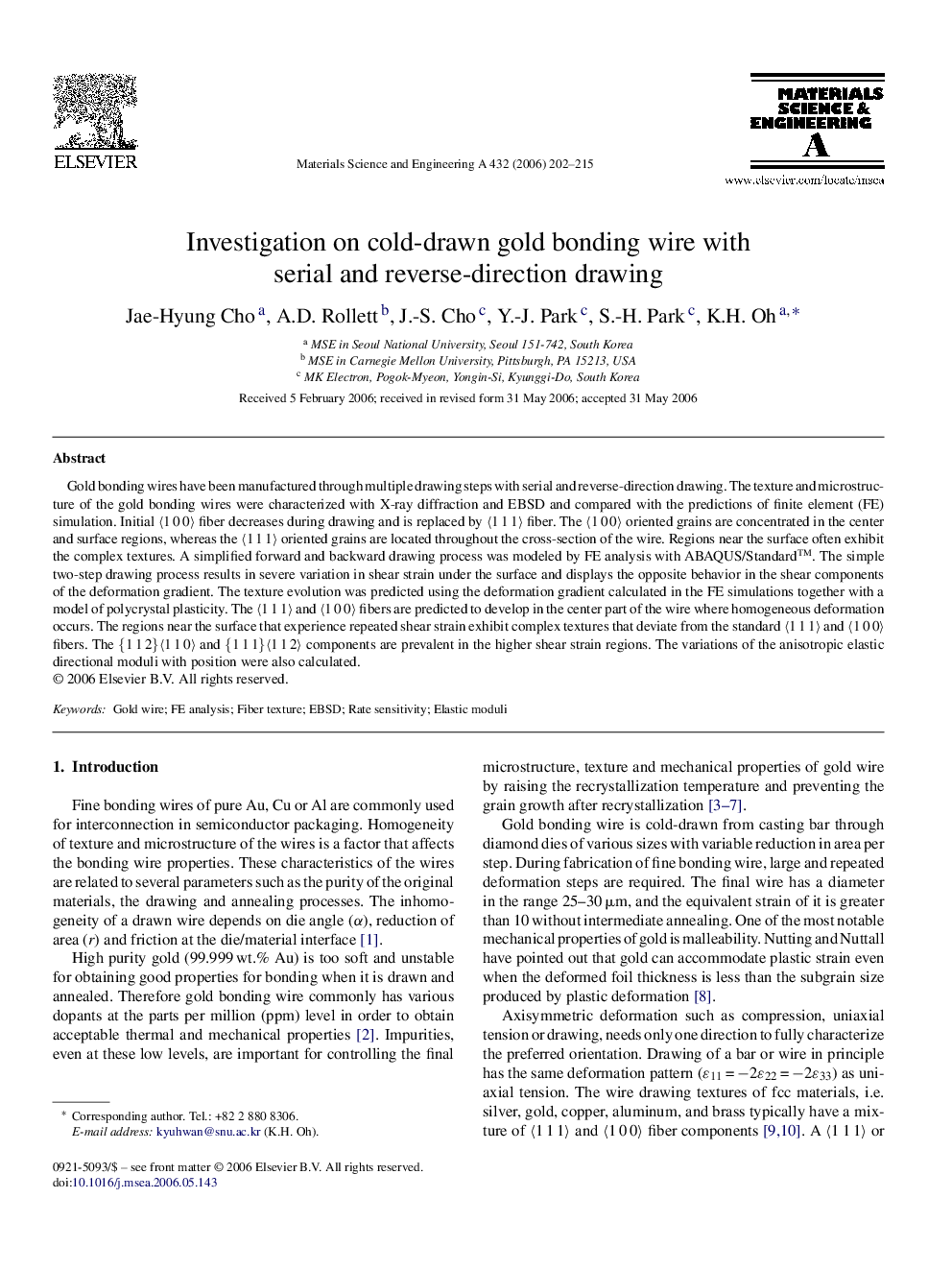| Article ID | Journal | Published Year | Pages | File Type |
|---|---|---|---|---|
| 1585072 | Materials Science and Engineering: A | 2006 | 14 Pages |
Abstract
Gold bonding wires have been manufactured through multiple drawing steps with serial and reverse-direction drawing. The texture and microstructure of the gold bonding wires were characterized with X-ray diffraction and EBSD and compared with the predictions of finite element (FE) simulation. Initial ã1 0 0ã fiber decreases during drawing and is replaced by ã1 1 1ã fiber. The ã1 0 0ã oriented grains are concentrated in the center and surface regions, whereas the ã1 1 1ã oriented grains are located throughout the cross-section of the wire. Regions near the surface often exhibit the complex textures. A simplified forward and backward drawing process was modeled by FE analysis with ABAQUS/Standardâ¢. The simple two-step drawing process results in severe variation in shear strain under the surface and displays the opposite behavior in the shear components of the deformation gradient. The texture evolution was predicted using the deformation gradient calculated in the FE simulations together with a model of polycrystal plasticity. The ã1 1 1ã and ã1 0 0ã fibers are predicted to develop in the center part of the wire where homogeneous deformation occurs. The regions near the surface that experience repeated shear strain exhibit complex textures that deviate from the standard ã1 1 1ã and ã1 0 0ã fibers. The {1 1 2}ã1 1 0ã and {1 1 1}ã1 1 2ã components are prevalent in the higher shear strain regions. The variations of the anisotropic elastic directional moduli with position were also calculated.
Related Topics
Physical Sciences and Engineering
Materials Science
Materials Science (General)
Authors
Jae-Hyung Cho, A.D. Rollett, J.-S. Cho, Y.-J. Park, S.-H. Park, K.H. Oh,
